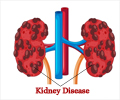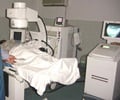Geographic sharing of kidneys increases the supply of procured organs available for transplantation and leads to stronger intent for the organ.
- Geographic sharing of kidneys increases kidney supply for transplantation.
- It also leads to stronger intent for the organ.
- Under the current organ allocation policy, some kidneys remain unprocured in some areas while being highly sought after in other areas.
Regional versus national sharing of kidneys
The research team found an expected annual increase in procured organs ranges from 58 (an increase of 0.5 percent of all procured kidneys) to 174 (an increase of 1.2 percent), depending on regional or national sharing.
In 2015, 87,538 patients with end-stage renal disease died while on dialysis (16.3 percent of all dialysis patients are awaiting kidney transplants), and 18,805 kidney transplantations were performed that same year. The majority, 13,132, came from cadaveric donors.
More than 100,000 people are waiting for a kidney transplant in the U.S, with more than 3,000 patients added to the list each month, according to the National Kidney Foundation.
This study is among the first to consider how to increase the supply of procured kidneys, rather than changing demand or considering different ways of allocating a fixed supply.
When the effects of a 2014 policy change that allows lower-quality kidneys, considered the bottom 15 percent of available organs, to be immediately offered more widely in a region without seeking patients only in the local area, the research team found that expanding the geographic range also could save lives of many who currently are less likely to receive a kidney based on where they live.
"The increase in supply is induced by the disparity in patient waiting times across different geographies," Parker said. "Thus, patients in areas with longer waiting times will benefit from this increase without adversely affecting the waiting times in the source areas. Overall, the gap in median waiting times between areas will narrow."
Sharing lower quality cadaveric kidneys
When some cadaveric kidneys of lower quality become available, these kidneys may not be procured since the local patients can simply wait a short period for a superior quality kidney. However, those lower-quality kidneys would be highly sought in other areas where the waiting times are much longer, such as in California and New York.
"Patients already at the top of the list in the more congested areas (which have longer median waiting times) will already likely have a short time for the next available kidney, so they will likely not accept a poorer quality kidney," he added. "However, someone who is further down the list in these areas may recognize that they face a lengthy wait and be willing to accept such a kidney rather than face the grim prospect of a four-hour dialysis treatment three times per week, not to mention the expense and diminished health."
Cadaveric kidneys are initially made available to those living in one of 58 donor service areas around the country, before being then offered to those in a broader region of several donor service areas and, finally, nationally. Competition among 272 transplant programs across the country also contributes to outcomes.
Fourteen of the 58 donor service areas offered 129 or fewer kidneys in 2009, so if some organs are shared more broadly, then the expected increase in transplants could represent the addition of a small- to medium-sized donor service area.
References:
- Mazhar Arikan, Baris Ata et al. Enhancing Kidney Supply Through Geographic Sharing in the United States, Production and Operations Management DOI: 10.1111/poms.12776
Source-Eurekalert
















